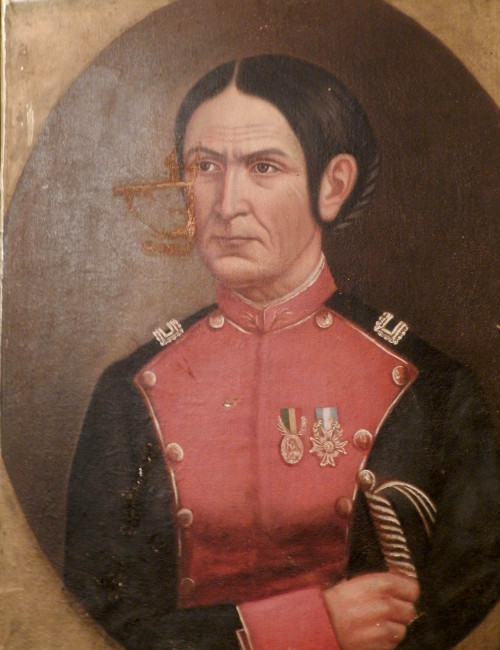#chuquisaca
Juana Azurduy (1780-1862), also known as Juana Azurduy de Padilla, was a South American guerrilla leader who fought for independence from Spanish rule in the early 19th century.
Azurduy was born in Chuquisaca, in what is now Bolivia but was at the time part of the Viceroyalty of Río de la Plata, a Spanish territory which controlled present day Argentina, Bolivia, Paraguay and Uruguay. She was a mestiza by birth, born to a Spanish father and an indigenous mother, however following the death of her father she was raised to be a nun in a convent. She was expelled at the age of 17 for her rebellious behaviour.
Azurduy had a deep appreciation for the indigenous people of Bolivia and in addition to Spanish she spoke the South American languages QuechuaandAymara. In 1805 she married a man who shared this passion, Manuel Padilla, with whom she had four children. When the Bolivian War of Independence began in 1809 both Azurduy and Padilla immediately joined the revolutionary forces and went on to command a 2000-strong guerrilla army in the fight against the Spanish. Padilla was later made civil and military commander for a large area around Chuquisaca and by 1813 their army numbered nearly 10,000 soldiers.
Between 1811 and 1817, Azurduy fought in 23 battles in the effort to liberate the region. During this time Azurduy dressed in male cavalry uniform, keeping her hair under a military cap, and became proficient in fighting with swords, rifles and cannon. On March 8th 1816, her forces captured the Cerro Rico of Potosí, which was the main source of Spanish silver. During the battle Azurduy personally led a cavalry charge which captured the enemy standard. For these acts she was promoted to Lieutenant Colonel and was personally honoured by General Manuel Belgrano, who gifted her with his own sword.
However Azurduy’s successes came at great cost. Her children were captured by enemy forces and although she and Padilla launched a ferocious raid to save them, all of the children were killed. Azurduy herself was injured in the attempt and Padilla was captured and killed in late 1816. When the Spanish mounted heavy counter-attacks against Bolivian forces in 1818, Azurduy retreated with her forces into Northern Argentina. Here she continued to fight the Spanish with an army of 6000. She also gave birth to a new daughter in the middle of a battle, returning to the fight shortly after the child had been born.
In 1825 Bolivia declared independence and Azurduy was able to return to Chuquisaca. However her efforts in the wars were largely forgotten and she spent the rest of her life in poverty. She died in obscurity in 1862, however her memory has been resurrected in more recent times. She is now remembered as a national hero of both Bolivia and Argentina, has posthumously been granted the rank of General in the Argentinian army, and a 52-foot high statue of her was unveiled in Buenos Aires in July 2015.
Post link

